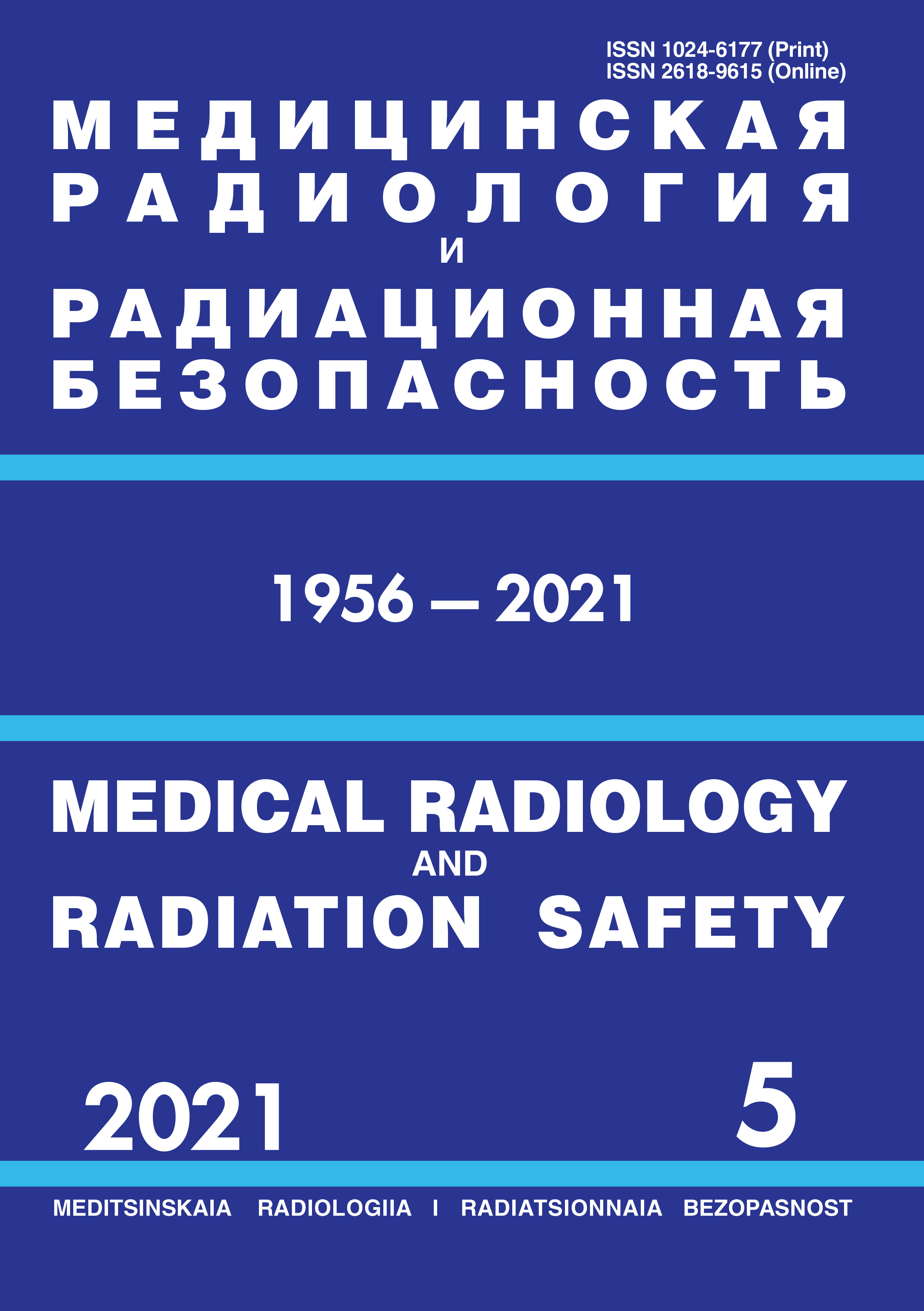CSCSTI 76.33
CSCSTI 76.03
Russian Classification of Professions by Education 31.06.2001
Russian Classification of Professions by Education 31.08.08
Russian Classification of Professions by Education 32.08.12
Russian Classification of Professions by Education 14.04.02
Russian Library and Bibliographic Classification 534
Russian Library and Bibliographic Classification 51
Russian Trade and Bibliographic Classification 5712
Russian Trade and Bibliographic Classification 5734
Russian Trade and Bibliographic Classification 6212
Russian Trade and Bibliographic Classification 5708
Introduction: Uranium hexafluoride (UF6, UHF) is a gaseous product containing uranium and fluorine. Once in the air, it interacts with water vapor and produces hydrolysis products that can penetrate the human body and lead to the chemical effects of uranium and fluorine, as well as the radiation effects of uranium on the body. This action can be very strong and therefore serious attention has been paid to its study for a long time. Purpose: Quantitative calculation of the radiation effects of uranium on humans and their analysis in the conditions of daily work at nuclear power plants, as well as in emergency situations. Material and methods: We consider uranium hexafluoride that appears under certain conditions in the air of the working rooms of some enterprises and describes methods for describing the distribution of UHF hydrolysis products to objects that can sense their effects. All these methods are combined into a single integrated model. The analytical expressions obtained in the framework of this model at various stages are given, which make it possible to calculate the radiation effect of UHF. Results: The calculated values of the characteristics of the radiation exposure are given, their analysis is carried out. The conditions are formulated under which there is a danger of serious radiation exposure of uranium hexafluoride to employees of nuclear power plants during everyday work and in emergency situations. Conclusion: Based on all the material presented, it is concluded that the constructed mathematical model reliably describes the event in question and allows us to calculate the radiation effect of uranium on humans.
uranium hexafluoride, hydrolysis products, inhalation intake, percutaneous intake, mathematical model
1. Devis L. Terrorizm i nasilie. Terror i katastrofy. Smolensk: Rusich, 1998.
2. Nadezhdinskiy A.I., Nabiev Sh.Sh., Grigor'ev G.Yu. i dr. Ekspress-metody izmereniya stepeni obogascheniya geksaftorida urana i sledovyh kolichestv i NF v atmosfere na osnove diodnyh lazerov blizhnego i srednego IK-diapazona // Optika atmosfery i okeana. 2005. T. 18, № 9. S. 785-794.
3. Houland Dzh. Farmakologiya i toksikologiya uranovyh soedineniy // Deystvie uranovyh soedineniy na cheloveka. M.: IL, 1951. T. 2. S. 224-243.
4. Rukovodstvo po organizacii medicinskogo obsluzhivaniya lic, podvergshihsya deystviyu ioniziruyuschego izlucheniya / Pod red. Il'ina L.A. M.: Energoatomizdat, 1986.
5. Gasteva G.N., Bad'in V.I., Molokanov A.A., Mordasheva V.V. Klinicheskaya toksikologiya himicheskih soedineniy urana pri hronicheskoy ekspozicii // Radiacionnaya medicina. Tom II. Radiacionnye porazheniya chelovek / Il'in L.A., red. M.: IzdAT, 2001. S. 369-388.
6. Gasteva G.N., Babenko S.P., Bad'in V.I. Determinirovannye effekty u rabotnikov atomnoy promyshlennosti // Komp'yuternye nauki, informacionnye tehnologii, prikladnaya fizika: Sb. nauchnyh trudov nauchnoy sessii MIFI-2001. M., 2001. T. 13. S. 124-125.
7. Gusev N.G. Spravochnik po radioaktivnym izlucheniyam i zaschite. M.: Medgiz., 1956.
8. Sanitarnye pravila i normativy SanPiN 2.6.1.2523-09. Normy radiacionnoy bezopasnosti NRB-99/2009. M., 2009.
9. Rekomendacii MKRZ. Publikaciya 30. Ch. 1. Predely postupleniya radionuklidov dlya rabotayuschih s ioniziruyuschim izlucheniem. M.: Energoatomizdat, 1982.
10. Rekomendacii MKRZ. Publikaciya 30. Ch. 2. Predely postupleniya radionuklidov dlya rabotayuschih s ioniziruyuschim izlucheniem. M.: Energoatomizdat, 1983.
11. Rekomendacii MKRZ. Publikaciya 30. Ch. 3. Predely postupleniya radionuklidov dlya rabotayuschih s ioniziruyuschim izlucheniem. M.: Energoatomizdat, 1984.
12. Rekomendacii MKRZ. Publikaciya 60. Radiacionnaya bezopasnost'. M.: Energoatomizdat, 1994.
13. Radiaciya i kozha: Materialy simpoziuma, Velikobritaniya, 1963. M.: Atomizdat, 1969.
14. Babenko S.P., Bad'in A.V. Ingalyacionnoe i perkutannoe postuplenie v organizm cheloveka toksichnyh veschestv v usloviyah povsednevnoy proizvodstvennoy deyatel'nosti na predpriyatiyah atomnoy promyshlennosti // Matematicheskoe modelirovanie. 2006. T. 18, № 3. S. 13-22.
15. Babenko S.P., Bad'in A.V. Verifikaciya matematicheskoy modeli, opisyvayuschey vozdeystvie na organizm cheloveka geksaftorida urana na predpriyatii atomnoy promyshlennosti // Vestnik Mosk. un-ta. Ser. 3. Fizika. Astronomiya. 2014. № 2. S. 22-30.
16. Babenko S.P., Bad'in A.V., Ovchinnikov A.V. O vozmozhnosti uskorennoy medicinskoy pomoschi lyudyam posle odnokratnogo vozdeystviya na nih geksaftorida urana // Gigiena i sanitariya. 2018. T. 97, № 3. S. 213-219. DOI:https://doi.org/10.18821/0016-9900-2018-97-3-213-219
17. Mirhaydarov A.H. Metod i sredstvo izmereniya geksaftorida urana v vozduhe // Radioaktivnost' pri yadernyh vzryvah i avariyah. SPb.: Gidrometeoizdat, 2000. S. 92.
18. Dose Coefficients for Intakes of Radionuclides by Workers. ICRP Publication 68 // Ann. ICRP. 1994. V. 24. No 4.
19. Leggett R.W., Pellmar T.C. The biokinetics of uranium migrating from embedded DU fragments // Journal of Environmental Radioactivity. 2003. Vol. 64, No 2-3. P. 205-225.
20. Human Respiratory Tract Model for Radiological Protection. ICRP Publication 66 // Ann. ICRP. 1994. V. 24 (1-3).





